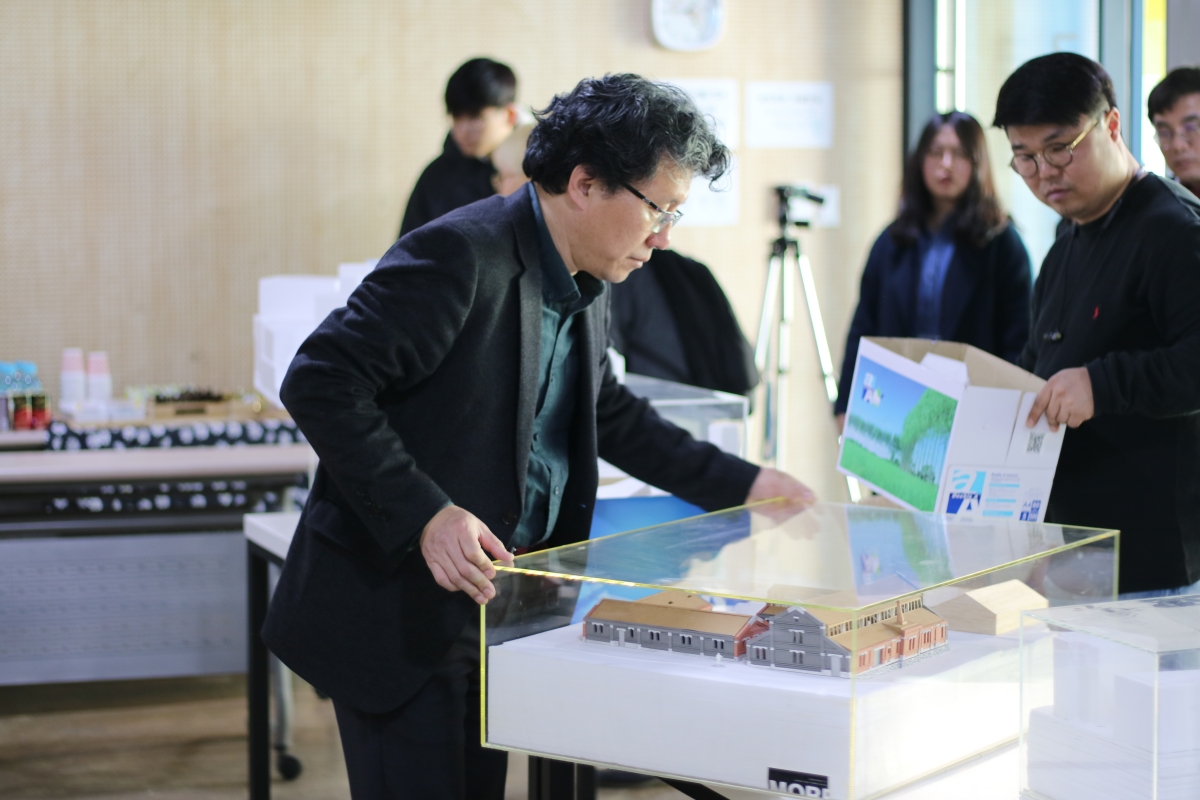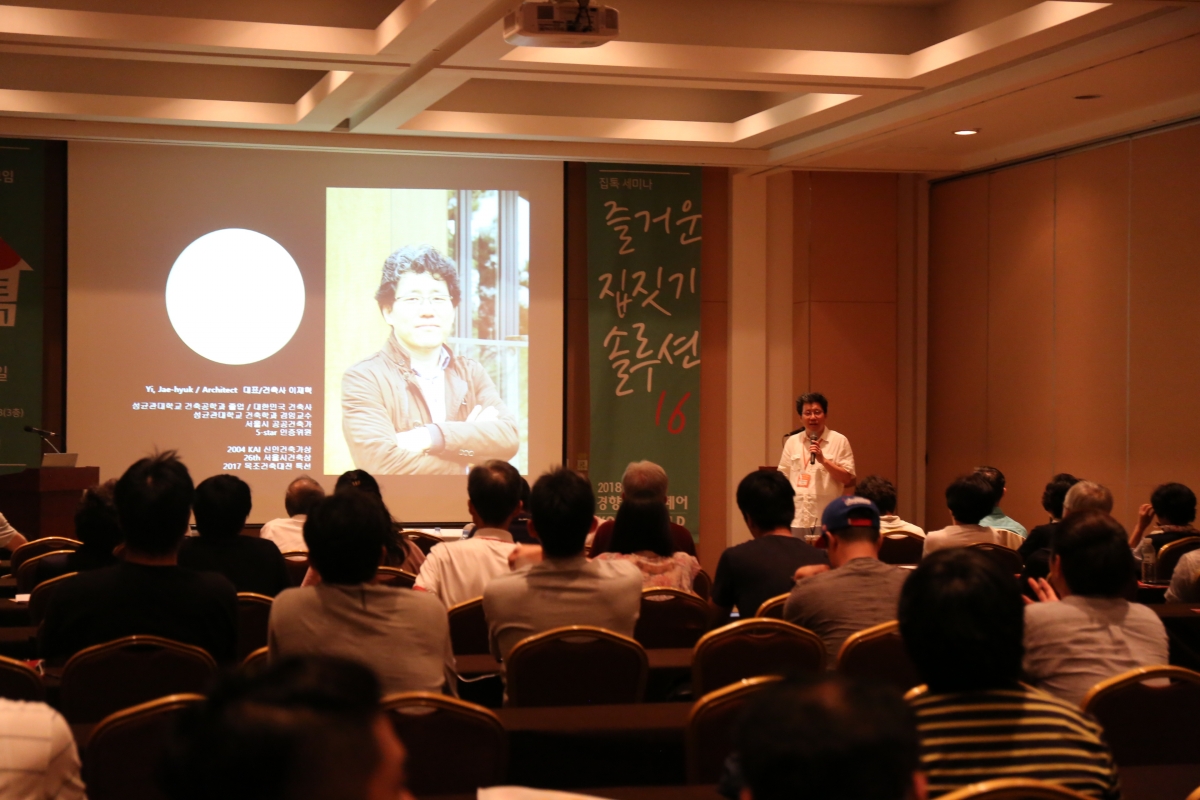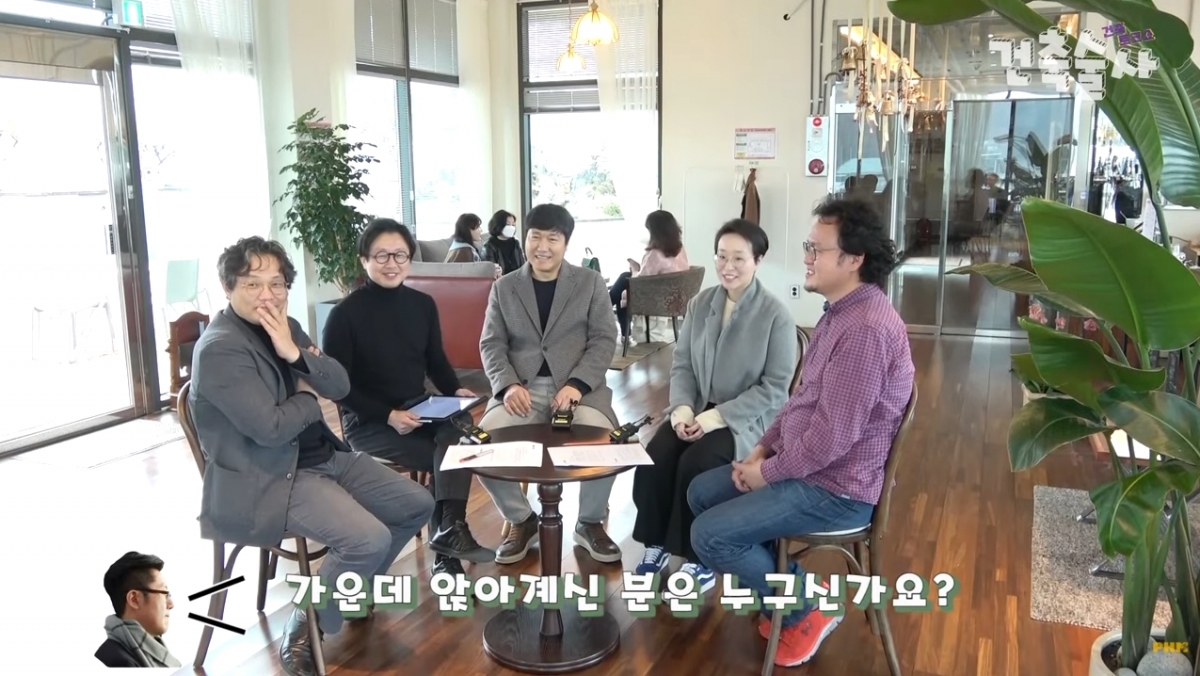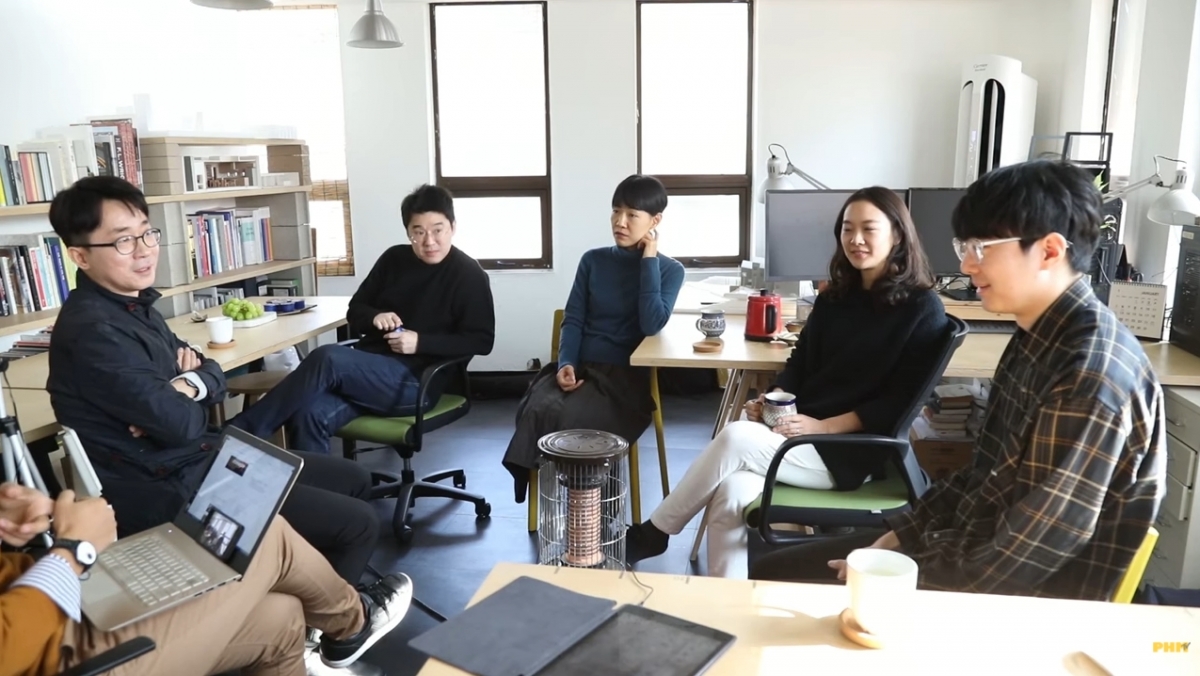ziptalk
Leader | Kim Donghee
Member | Kang Mihyun, Kang Jeyong, Bahk Joungyeon, Shin Hyunbo, Oh Sinwook, Chung Yerang, Jung Hyobin, etc.
Period of operation | Oct. 2014 – ongoing
Main programme | seminar
Operational aims | To communicate with public by sharing the architectural informations.
Website |www.ziptalk.co.kr

Kim Donghee principal, KDDH × Kim Yeram
Kim Yeram: Ziptalk is a group made up of 26 architects. What common interests brought these members together?
Kim Donghee: In October, 2014, I directed a seminar with Kang Joohyung, Mun Young-a and Seo Kyunghwa. At the time, we had just opened our firm and were working on a series of small-scale projects and residential projects. During that time, we realised that the prevailing qualities of architecture suffer, and we conceived a programme for architects and clients to see eye-to-eye as a way of solving this problem. We hoped that the Susuto Seminar would narrow the gap between the architect, who wish to create unique projects, and the client, who seek affordable and pleasurable spaces. Currently, the Susuto Seminar is composed of 26 architects, and is closer in format to a talk show made up of conversations rather than lectures.
Kim Yeram: Why is the Susuto Seminar conducted in the form of a talk show?
Kim Donghee: In order for high quality architecture to become mainstream, we believe that architecture must be explained as it is, meeting its public at eye-level. One must choose to listen to each other rather than to lecture, for us to get closer in understanding one another’s intentions. While the public doesn’t have many opportunities to listen to the stories of registered architects, architects also don’t have many opportunities to listen to the opinions of members of the public. We judged that communication through talk-show like events could become a shortcut towards realising a better, more engaged architecture.
Kim Yeram: I heard that the members of ziptalk hold the seminars as a kind of relay. What are the benefits of this method with regards to events that aim to deliver architectural information to prospective clients?
Kim Donghee: Most clients commission an architectural project only once in their lifetime. This means that there is a high possibility that those who attended the Susuto Seminar last year will not attend again. Of course, there may be people who frequent the seminars before building a home. In our seminars, we generally discuss the points to which we should attend with all due care when designing a space or during construction. There may be instances throughout the process when we explain the wrong thing. Fortunately, the relay style of the Susuto seminar allows for issues or content to be modified or developed even if the lecturer changes.
Kim Yeram: Since the Coronavirus Disease-19 pandemic, we learnt that you were planning to run live online talks and YouTube videos. Can you describe in detail your future plans for running ziptalk?
Kim Donghee: We are developing lectures and live online talk shows using virtual conference applications. Nevertheless, uploading to public channels like YouTube makes it difficult for architects to talk without restraint, and as such we are planning to upload these to an online café operated in-house. This doesn’t mean we don’t plan to run a YouTube channel. We are planning for the 26 members of ziptalk to describe their own architectural styles by shooting videos of three to four minutes, rather than longer lectures.

PHM TV
Leader | Gong Gyeongtae
Period of operation | Apr. 2016 – ongoing
Main programme | video
Website | www.youtube.com/channel/UCfN4xUd6rU3crutmjItsYzQ

PHM ZINE is a webzine specializing in architecture to discuss the differences of domestic residential culture by presenting residential projects abroad. This media channel has presented houses that clearly reveal the residential culture and concepts of countries abroad, and recently they have attempted to show this in parallel with domestic architecture. This is a video channel called PHM TV. This video channel not only introduces architects but also deals with the onsite anecdotes of building a house in order to become a platform which connects the public with the architectural scene. Due to a rise in the number of media that publish videos, it is no longer a surprise to see media specializing in architecture producing videos about architects and architecture. Nevertheless, PHM TV is noticeable as a platform for its approach to put content concerning houses at the forefront, while attempting to build a bridge between architects and the public. Its commonalities with ziptalk lie in the fact that it communicates architectural culture with houses at the center.
Most video content that deal with houses exclusively discuss the sensation of a certain space, in order to direct people’s interest towards aesthetically pleasing spaces. However, PHM TV undauntedly presents the process of building a house and the anecdotes of the people struggling to realize this. It seems that they selected such a way of communicating information as they recognized this open approach to talk about the context of residential culture as an important issue in communicating with the public. Watching a couple of minutes of the videos provided by the platform will help one understand PHM TV’s chosen communication method. The Talking Architects series explains in detail the necessary information for building a house through contents communicating information to a public new to the field of architecture, and the Archirism, A series features people who work in architecture, by presenting anecdotes about the field and contents for students studying architecture. Archirism A proceeds with a larger single theme which the presenters chat about, mainly focusing on content like recent architectural trends, the urban environment, studying and finding a job in architecture. It may seem unfamiliar to think of a video channel as a platform. However, it may also be possible to think of such a form of media as a place of social connection and a platform since there are not many outlets in the architectural scene which communicate with the public and students.





